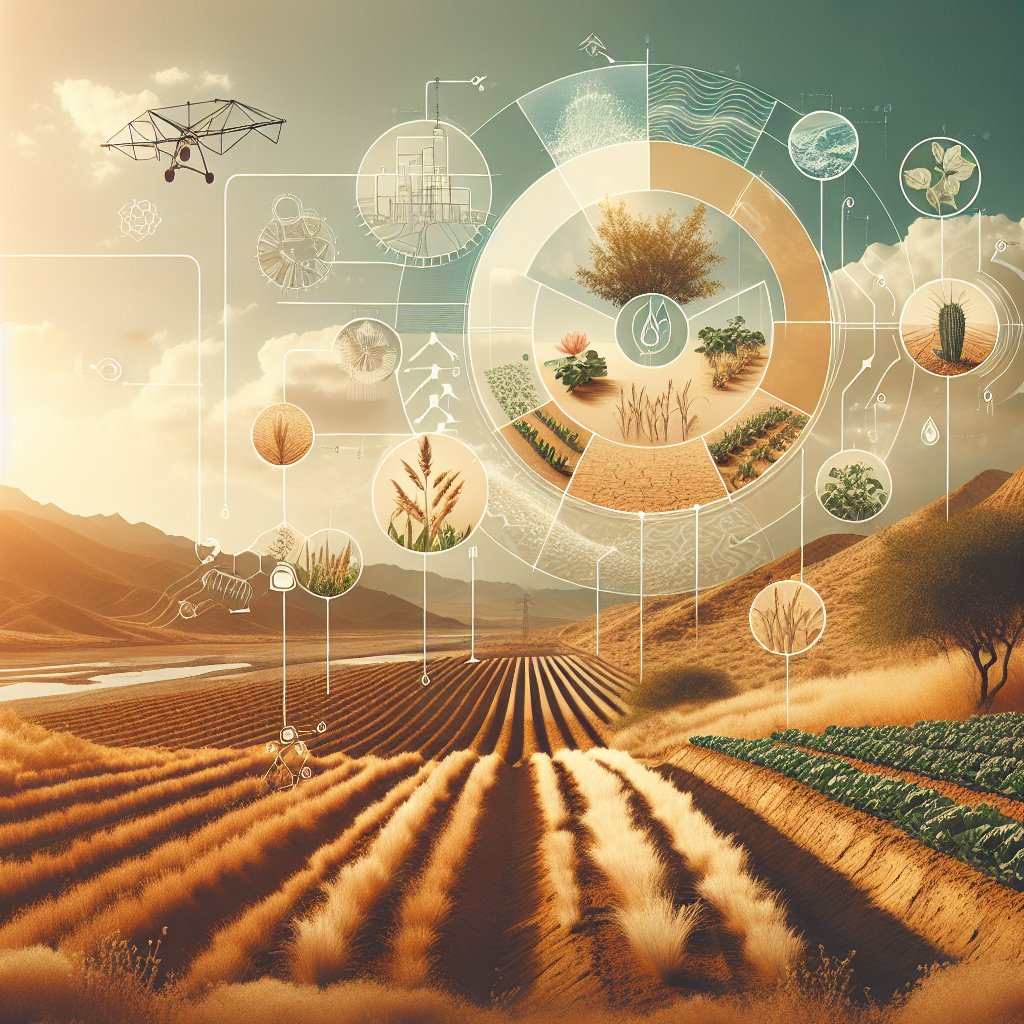
Growing crops in arid climates with minimal water is a challenge that has been faced by farmers and agricultural scientists for decades. As climate change continues to exacerbate water scarcity issues, finding sustainable methods to cultivate crops in dry regions has become increasingly critical. This article explores innovative techniques and strategies that can help farmers maximize crop yields while conserving water resources.
Understanding Arid Climates and Their Challenges
Arid climates are characterized by low rainfall, high temperatures, and often, poor soil quality. These conditions create a challenging environment for traditional farming practices, which typically rely on consistent water supply and fertile soil. In arid regions, water is a precious commodity, and its scarcity can severely limit agricultural productivity.
One of the primary challenges in arid climates is the high rate of evaporation, which can quickly deplete soil moisture. Additionally, the lack of organic matter in the soil can lead to poor water retention, making it difficult for plants to access the moisture they need to grow. These factors necessitate the development of innovative farming techniques that can help conserve water and improve soil quality.
Innovative Techniques for Water Conservation
To address the challenges of farming in arid climates, several innovative techniques have been developed to conserve water and improve crop yields. These methods focus on efficient water use, soil management, and the selection of drought-resistant crop varieties.
Drip Irrigation
Drip irrigation is a highly efficient method of watering crops that delivers water directly to the plant’s root zone. This technique minimizes water loss due to evaporation and runoff, ensuring that plants receive the moisture they need without wasting water. Drip irrigation systems can be customized to suit the specific needs of different crops, making them an ideal solution for arid regions.
Mulching
Mulching involves covering the soil with a layer of organic or inorganic material, such as straw, wood chips, or plastic sheeting. This layer helps to retain soil moisture by reducing evaporation and suppressing weed growth. Mulching also improves soil quality by adding organic matter as it decomposes, enhancing the soil’s ability to retain water.
Rainwater Harvesting
Rainwater harvesting is the collection and storage of rainwater for agricultural use. In arid regions, capturing and storing rainwater during the wet season can provide a valuable water source during dry periods. This technique can be implemented using simple systems, such as rain barrels, or more complex setups, like underground cisterns.
Soil Management and Crop Selection
In addition to water conservation techniques, effective soil management and the selection of appropriate crop varieties are crucial for successful farming in arid climates.
Soil Amendments
Improving soil quality is essential for enhancing water retention and supporting healthy plant growth. Soil amendments, such as compost, manure, and biochar, can increase the organic matter content of the soil, improving its structure and ability to hold water. These amendments also provide essential nutrients that support plant health and productivity.
Drought-Resistant Crops
Selecting crop varieties that are naturally adapted to arid conditions can significantly improve agricultural success in dry regions. Drought-resistant crops, such as sorghum, millet, and certain varieties of beans and legumes, have evolved to thrive in low-water environments. These crops often have deep root systems that allow them to access water from deeper soil layers, making them more resilient to drought conditions.
Technological Innovations in Arid Agriculture
Advancements in technology have opened new possibilities for farming in arid climates. From precision agriculture to genetic engineering, these innovations are helping farmers optimize their practices and improve crop yields.
Precision Agriculture
Precision agriculture involves the use of technology to monitor and manage agricultural practices with high accuracy. Tools such as soil moisture sensors, satellite imagery, and GPS-guided equipment allow farmers to apply water and nutrients precisely where and when they are needed. This targeted approach reduces waste and maximizes resource efficiency, making it particularly valuable in water-scarce regions.
Genetic Engineering
Genetic engineering has the potential to revolutionize agriculture in arid climates by developing crop varieties with enhanced drought tolerance. Through genetic modification, scientists can introduce traits that improve a plant’s ability to withstand water stress, such as deeper root systems, improved water-use efficiency, and increased resistance to heat. These genetically engineered crops can offer a sustainable solution to the challenges of farming in dry regions.
Conclusion
Growing crops in arid climates with minimal water is a complex challenge that requires a multifaceted approach. By combining traditional knowledge with modern innovations, farmers can develop sustainable practices that conserve water and improve crop yields. Techniques such as drip irrigation, mulching, and rainwater harvesting, along with advancements in precision agriculture and genetic engineering, offer promising solutions for the future of agriculture in arid regions. As the global demand for food continues to rise, these strategies will be essential for ensuring food security and environmental sustainability in the face of climate change.

